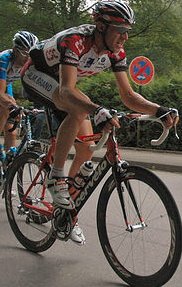Can Your Socks Make You Faster?
* improving venous return to the heart,
* preventing muscles from moving unnecessarily as with excess vibration meaning less fatigue, and
* speeding recovery.
They also claim that wearing them on long flights as when going to Hawaii reduces leg and foot swelling due to fluids pooling in legs.
Elastic compression stockings have been around for a long time and used in the treatment of several leg conditions such as blood clotting in deep veins (“thrombosis”) and faulty valves in the veins with weakened vein walls (“varicose veins”). The research generally supports their use for such injuries, but do they improve athletic performance such as the claims made above?
To try to answer that question I scanned more than 700 studies of the stockings looking for any that looked at their benefits during exercise at any level. Nearly all of the studies used subjects suffering from either thrombosis or varicose veins. When it came to exercise benefits in this population the results were mixed. The benefits for athletes may not be the same as for these unhealthy subjects. But there may still be some insights. The following is a typical sample of what I read.
Kahn (1) found that elastic compression stockings did not improve symptoms or increase exercise capacity while walking or running in subjects with thrombosis. Jones’ (2) research appears to support Kahn’s. This study discovered that in subjects with normal leg veins there were negligible benefits from ECS in normal daily activities. Zajkowski reported that the stockings are more effective in controlling reflux (backward flow of blood as in varicose veins) than in improving calf muscle pump function in the normal daily activities of subjects with thrombosis and varicose veins. On the other hand, Ibegbuna (4) showed significantly improved venous blood return in those with chronic venous insufficiency at all walking speeds. As you can see, the answers to such questions aren’t always clear and well-defined by the scientific literature.
I came across only one study using healthy athletes. Ali (5) discovered that after 10km running trials, recreationally active men experienced a reduction in delayed-onset muscle soreness 24 hours after wearing compression stockings. This would certainly indicate a speedier recovery as claimed by some of the stocking users. But until there is more research we will just have to rely on the experiences of athletes who have used them.
If you decide to give them a try you’ll find there is a wide range of prices and reported features. I found them online at $2US a pair and also $50US. That’s a huge difference, especially for one pair of socks. They also come in different models depending on how much pressure they exert on the leg as measured in millimeters of mercury. The most common pressure used in research seemed to be 20-30mmHg, but that is not to say this is the best for athletes. You can find some with greater pressure and also with less. More common when searching the retail websites that cater to athletes is to find no indication of pressure ratings.
I wish I could give you a definitive answer from the research on this matter. And neither I nor the athletes I have coached have ever used them so I can’t speak from experience either. Should you decide to give them a try please feel free to report your experience here with a comment.
References
1. Kahn SR, et al. 2003. Effect of graduated elastic compression stockings on leg symptoms and signs during exercise in patients with deep venous thrombosis: a randomized crossover trial. J Thromb Haemost 1(3): 494-499.
2. Jones NA, et al. 1980. A physiological study of elastic compression stockings in venous disorders of the leg. Br J Surg 67(8): 569-572.
3. Zajkowski PJ, et al. 2002. Compression stockings and venous function. Arch Surg 137(9): 1064-1068.
4. Ibegbuna V, et al. 2003. Effect of elastic compression stockings on venous hemodynamics during walking. J Vasc Surg 37(2): 420-425.
5. Ali A, et al. 2007. Graduated compression stockings: physiological and perceptual responses during and after exercise. J Sports Sci 25(4): 413-419.



